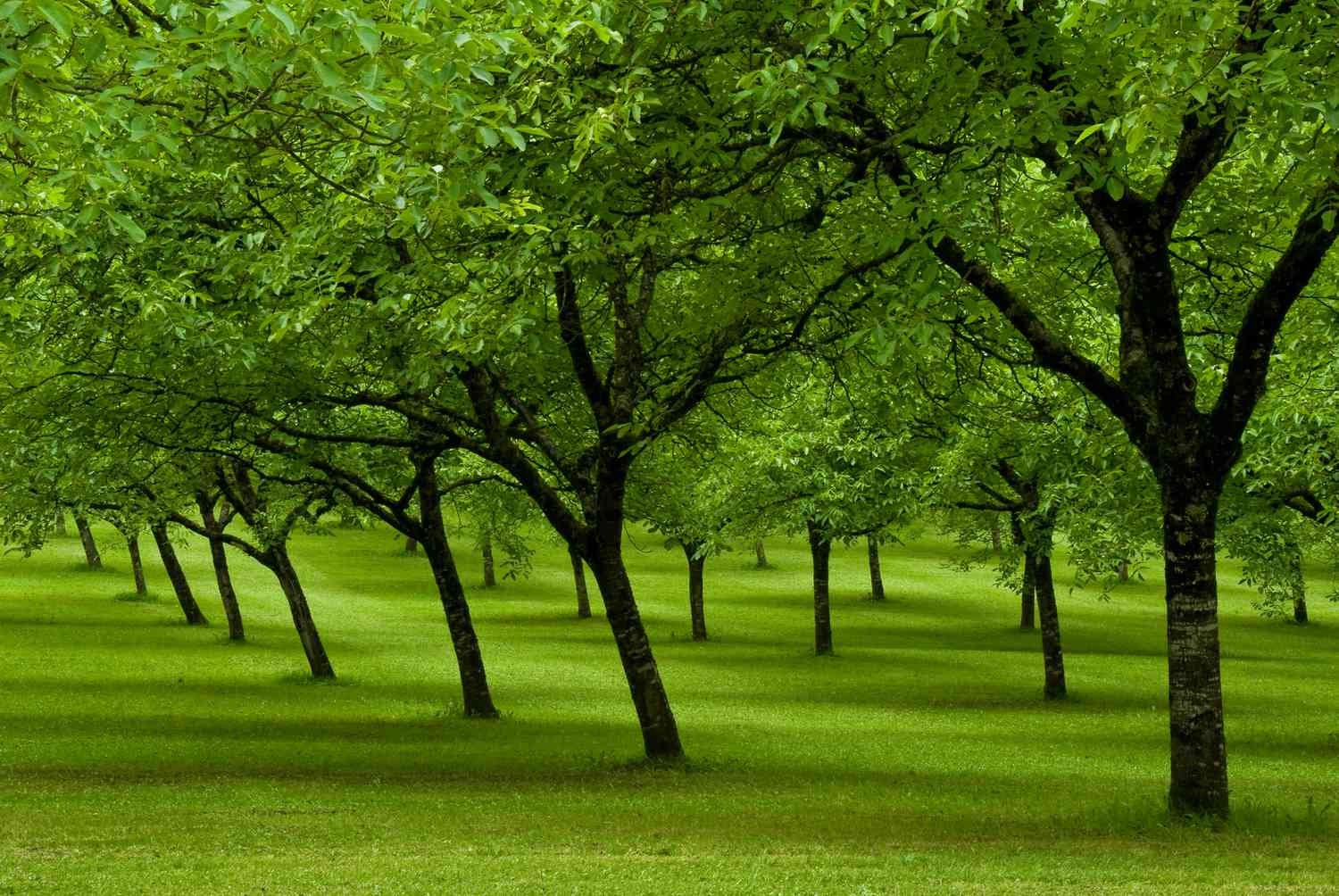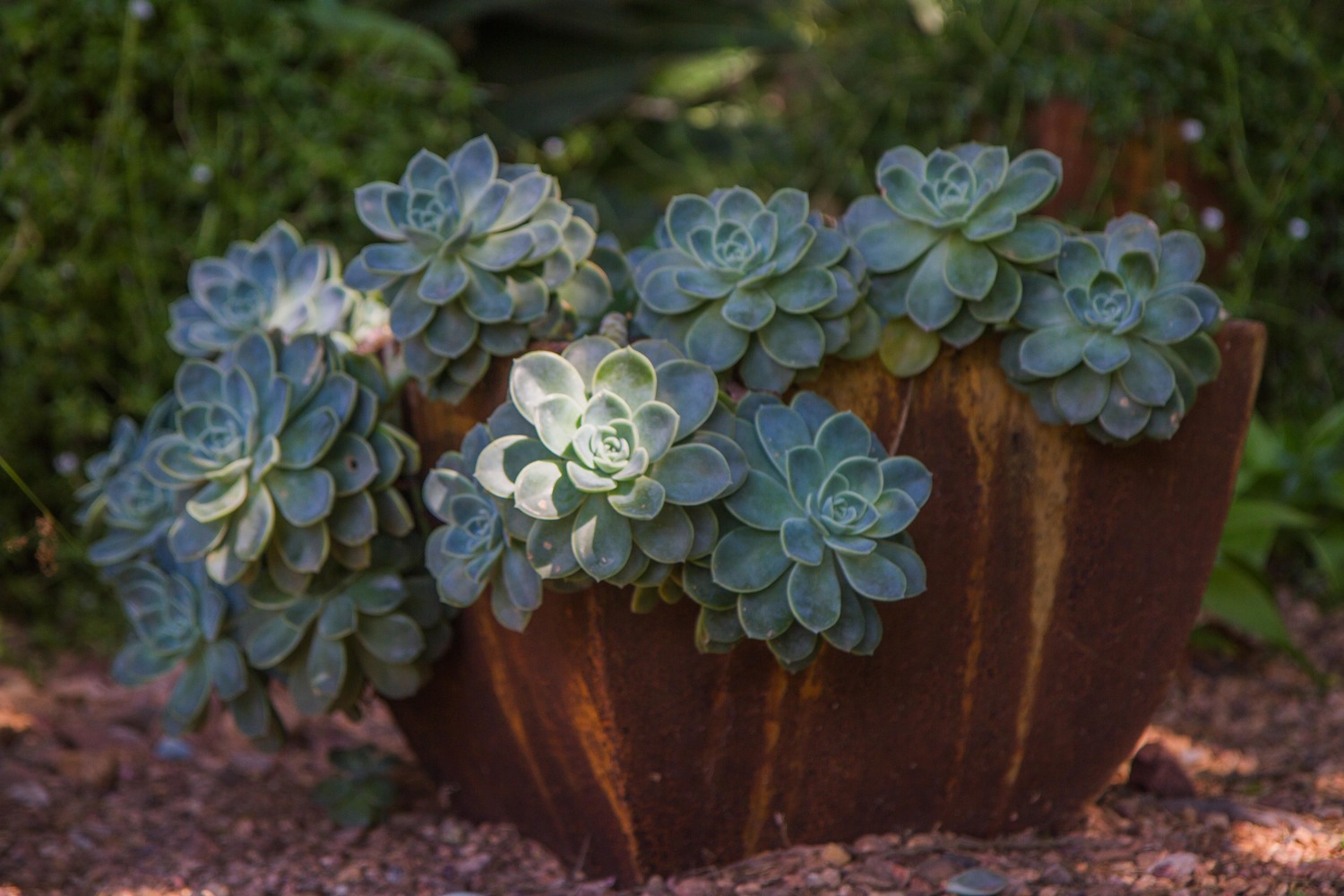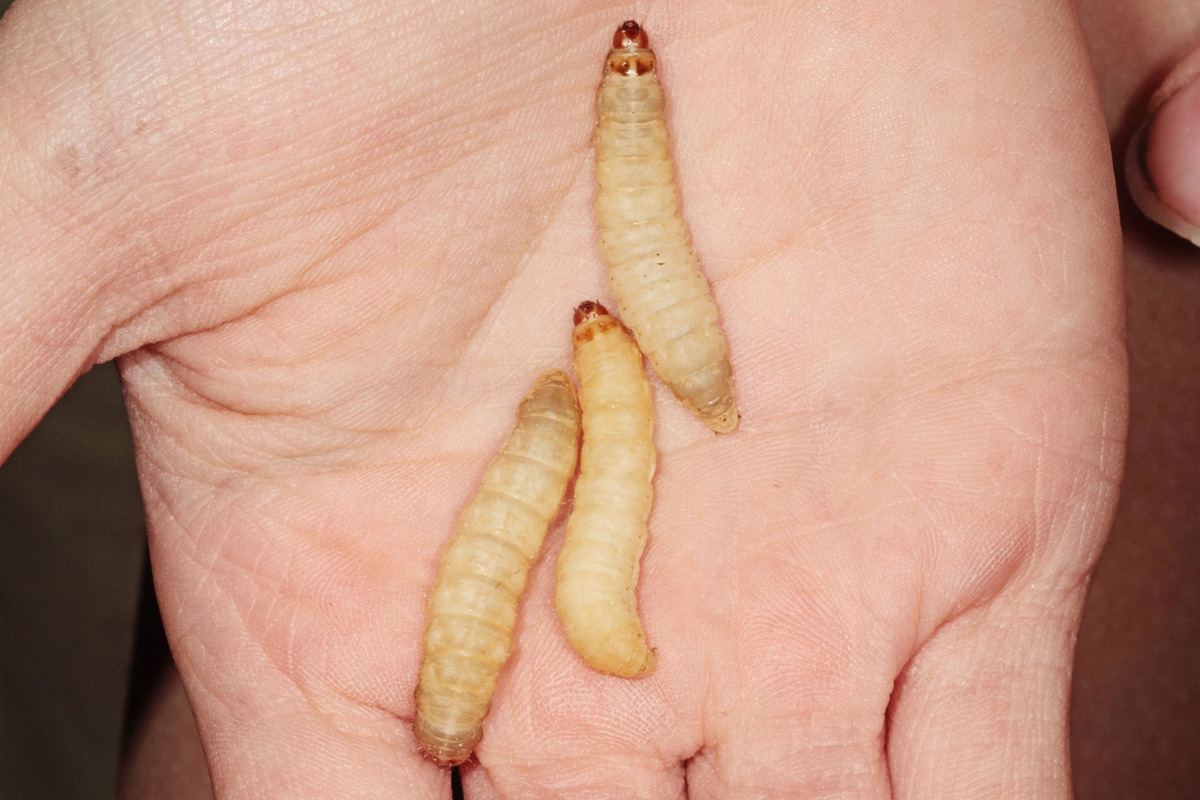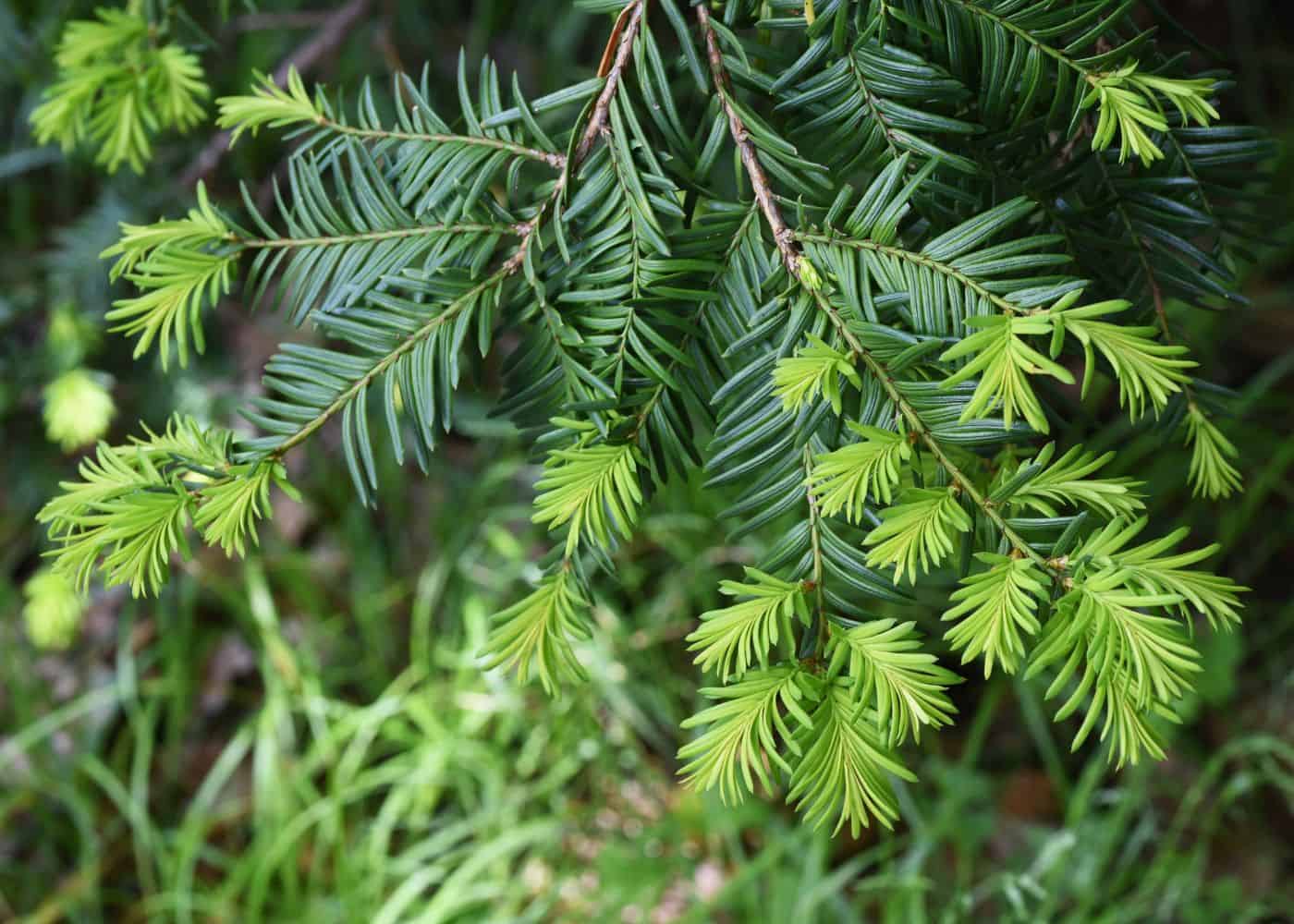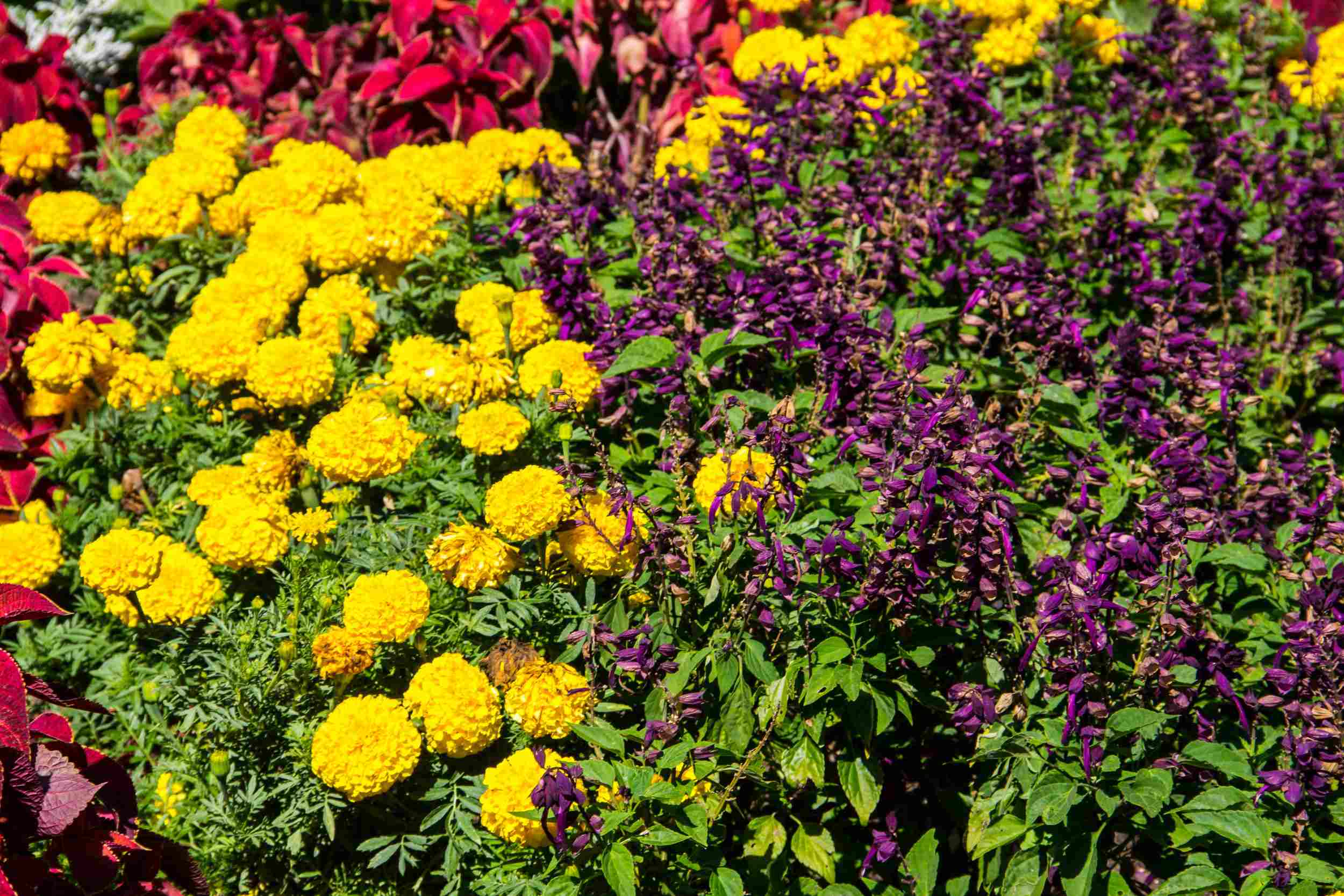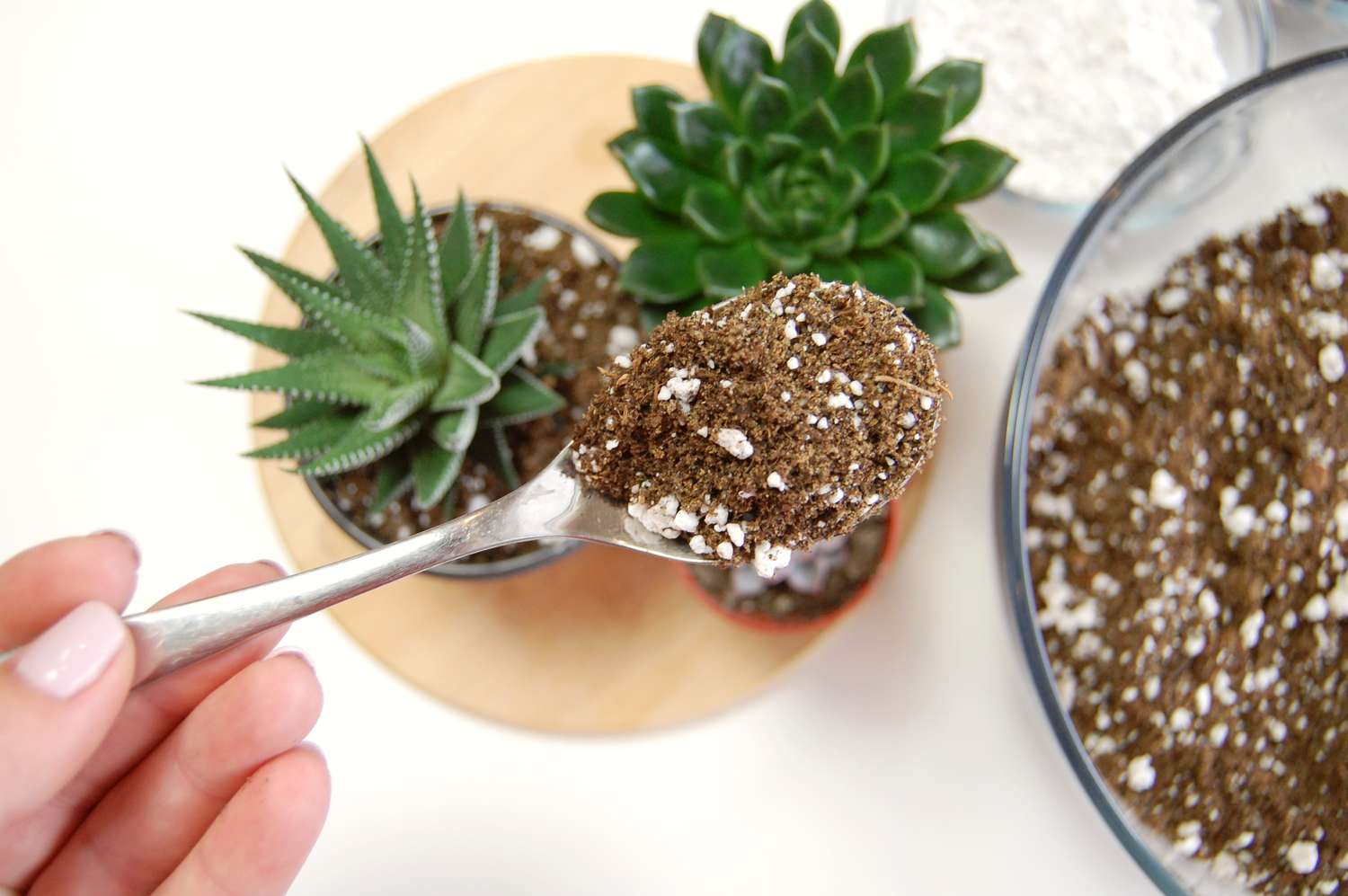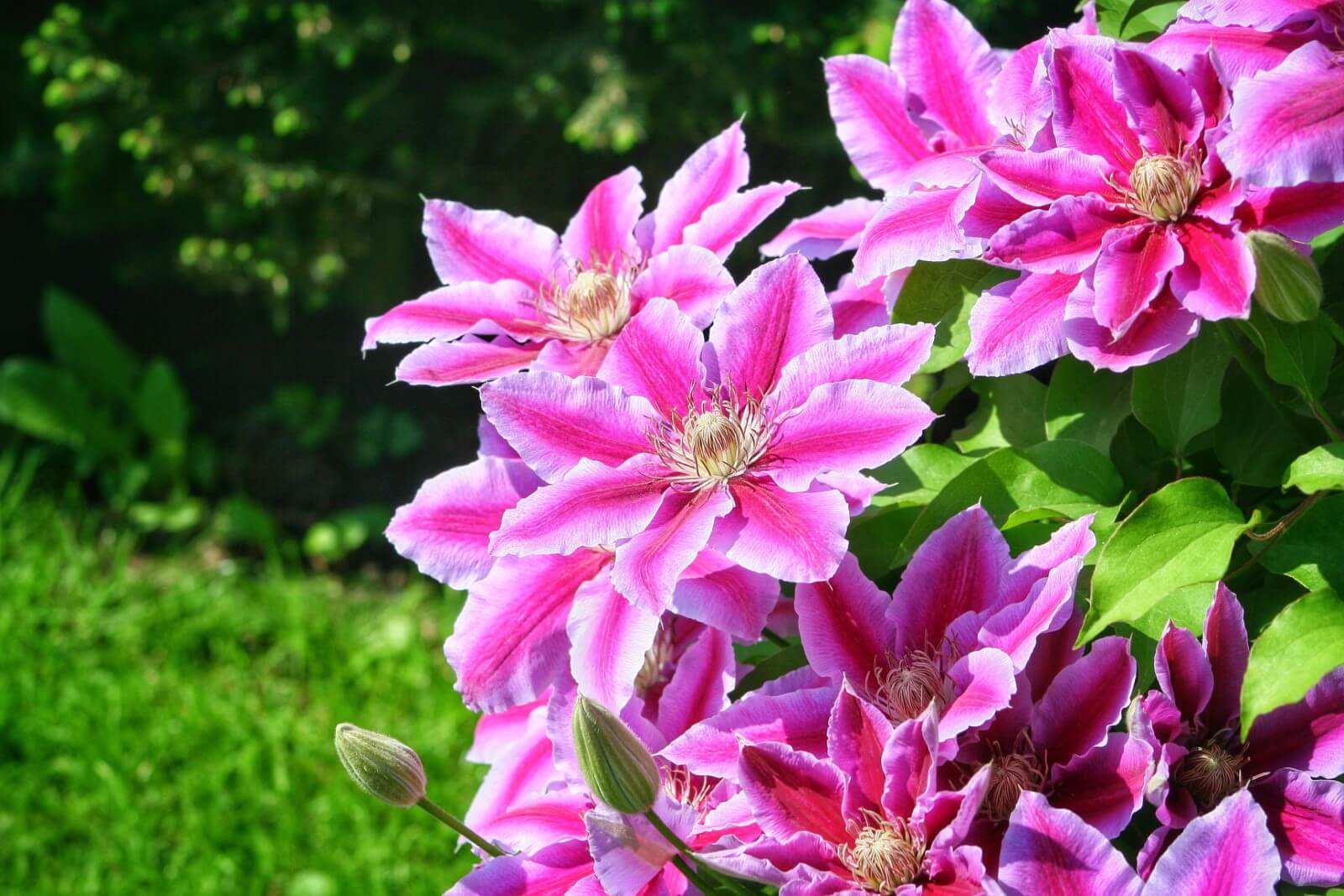Home>Types of Gardening>Ornamental Gardening>What Kind Of Perennials Do Well In Shade


Ornamental Gardening
What Kind Of Perennials Do Well In Shade
Modified: January 22, 2024
Discover the best ornamental gardening perennials that thrive in shade. Enhance your garden with these shade-loving plants for a vibrant and colorful display.
(Many of the links in this article redirect to a specific reviewed product. Your purchase of these products through affiliate links helps to generate commission for Chicagolandgardening.com, at no extra cost. Learn more)
Table of Contents
Introduction
Welcome to the wonderful world of ornamental gardening and the art of transforming shady areas into vibrant and breathtaking spaces. If you have a garden that is predominantly shaded, you might find it challenging to choose the right plants that will thrive and add beauty to your outdoor oasis. However, fear not! With the right knowledge and careful selection, you can create a stunning shade garden filled with an array of captivating perennials.
Shade gardens offer a unique opportunity for creativity and experimentation. They can be tranquil retreats with cool, soothing colors and textures or bold and dramatic sanctuaries full of contrasting foliage and striking blooms. Whatever your vision, there are a plethora of shade-loving perennials that will flourish in these conditions and bring life to your garden.
Before delving into the world of shade perennials, it’s important to understand the concept of shade gardens and their unique requirements. Shade can be classified into different categories, including full shade, partial shade, and dappled shade. Full shade occurs when an area receives less than three hours of direct sunlight per day, whereas partial shade refers to areas that receive three to six hours of sunlight, typically during the morning or late afternoon. Dappled shade is created by the filtered sunlight that shines through the canopy of deciduous trees, creating constantly shifting patterns of light and shade.
When selecting shade perennials, there are a few crucial factors to consider. First, assess the type of shade in your garden and identify the approximate amount of sunlight the area receives. This will help you choose the plants that are best suited to your specific conditions. Additionally, consider the soil type, moisture levels, and other environmental factors that may affect the growth and health of your plants.
In the following sections, we will explore some of the most popular and beautiful shade-loving perennials. From delicate flowers to lush foliage, these plants will add a touch of magic to your shade garden. So, grab your gardening tools and join us on this journey of creating a mesmerizing haven of greenery and beauty.
Understanding Shade Gardens
Shade gardens are magical spaces that offer a refreshing retreat from the scorching sun. They provide a cool and tranquil environment, perfect for relaxing and unwinding. Understanding the unique characteristics of shade gardens is essential for cultivating them successfully.
Shade can be categorized into different types: full shade, partial shade, and dappled shade. Full shade occurs in areas that receive less than three hours of direct sunlight per day. These areas are often located beneath dense tree canopies or in the shadow of buildings. Partial shade refers to areas that receive three to six hours of sunlight, typically during the morning or late afternoon. Dappled shade is created by the filtered sunlight that penetrates through the foliage of overhead trees, resulting in the patterns of light and shade on the ground.
One of the key things to consider in shade gardening is the amount of sunlight a particular area receives. This knowledge helps determine the appropriate plants for the specific conditions. Some shade-loving perennials will thrive in full shade, while others prefer partial shade or dappled shade. By understanding the type of shade in your garden, you can create the ideal environment for your chosen plants.
Another important factor to consider is soil type. Shade gardens are known to have moisture-retaining soil due to reduced evaporation caused by limited sunlight exposure. The soil in these gardens can range from sandy to loamy or even clay-based. It is essential to choose shade perennials that are well-suited to the soil composition of your garden. Amending the soil with organic matter, such as compost or peat moss, can improve its moisture-holding capacity and enhance plant growth.
The moisture levels in shade gardens can also fluctuate, depending on factors like tree canopies and nearby structures. Some shade gardens may have consistently damp soil, while others may experience periods of dryness due to competition for water from tree roots. Understanding the moisture levels in your shade garden will help you choose plants that can thrive in either consistently moist or moderately dry conditions.
In addition to sunlight and soil conditions, it’s crucial to consider other environmental factors in your shade garden. For instance, the presence of large trees can create a root competition, making it necessary to choose shade perennials with shallow root systems. The proximity of nearby structures can also impact the air circulation and humidity levels in your garden, affecting plant growth and health.
By understanding the unique characteristics and requirements of shade gardens, you can make informed decisions when selecting shade-loving perennials. With the right choices, your shade garden will flourish as a vibrant and enchanting sanctuary.
Factors to Consider when Choosing Shade Perennials
Choosing the right shade perennials for your garden is a crucial step in creating a thriving and visually appealing space. To ensure the long-term success of your shade garden, there are several factors you should consider when selecting your plants.
Firstly, it’s important to assess the level of shade in your garden. As mentioned earlier, shade can be classified into full shade, partial shade, or dappled shade. Different plants have varying shade tolerance levels, and selecting the right plants for your specific shade conditions is essential for their growth and vitality. Consider the amount of sunlight your garden receives throughout the day and choose shade perennials accordingly.
Another factor to consider is the soil type in your shade garden. Shade gardens tend to have moisture-retaining soil due to reduced evaporation caused by limited sunlight exposure. Take note of the soil type in your garden, whether it is sandy, loamy, or clay-based. This information will help you select shade perennials that are well-suited to your specific soil conditions. Additionally, amending the soil with organic matter, such as compost or peat moss, can improve its texture and drainage, creating an optimal environment for plant growth.
Moisture levels in shade gardens can vary depending on factors such as tree canopies and nearby structures. Some shade gardens may have consistently damp soil, while others may experience periods of dryness due to competition for water from tree roots. Consider the moisture levels in your garden and choose plants that are well-suited to either consistently moist or moderately dry conditions. This will ensure the plants can thrive in your specific moisture environment.
Consider the mature size of the shade perennials you choose for your garden. Some plants may start small but grow into large, sprawling specimens over time. Make sure you have ample space to accommodate the mature size of the plants you select. This will prevent overcrowding and ensure that each plant has enough space to grow and flourish.
Furthermore, take note of the overall aesthetic you want to achieve in your shade garden. Consider the color palette, texture, and shape of the foliage and flowers of the shade perennials you choose. Create a balanced and harmonious garden by selecting plants that complement each other and create an engaging visual display. Mixing different heights, leaf textures, and bloom times will add depth and interest to your shade garden.
Lastly, don’t forget to check the hardiness zone of the shade perennials you are considering. Different plants have different temperature tolerances, and selecting plants that are suitable for your hardiness zone will ensure their long-term survival. Consult a hardiness zone map and choose plants that are recommended for your specific zone.
By considering these factors – shade levels, soil type, moisture levels, mature sizes, aesthetics, and hardiness zones – you can make informed choices when selecting shade perennials for your garden. This will set the stage for a thriving and beautiful shade garden that will bring joy and delight for years to come.
Shade-Loving Perennials
If you have a shade garden, you’re in luck! There are numerous shade-loving perennials that will add beauty, texture, and color to your outdoor oasis. From delicate flowers to lush foliage, these plants thrive in the lower light conditions provided by shade. Let’s explore some of the most popular and enchanting shade-loving perennials for your garden:
- Astilbe: This perennial is known for its stunning feathery plumes of flowers in shades of pink, white, and red. Astilbe thrives in partial shade and moist soil, making it an excellent choice for adding vertical interest to your shade garden.
- Hosta: No shade garden is complete without hostas. These plants have bold, textured foliage and come in a wide range of sizes, colors, and patterns. Hostas prefer partial to full shade and provide lush groundcover in shaded areas.
- Bleeding Heart: With its heart-shaped, dangling flowers in shades of pink and white, Bleeding Heart is a shade garden favorite. This delicate perennial blooms in early spring and thrives in moist, well-draining soil.
- Lungwort: Lungwort is prized for its unique silver-spotted foliage and clusters of funnel-shaped flowers in shades of pink, purple, and blue. This shade-loving perennial is drought-tolerant and thrives in moist, well-draining soil.
- Ferns: Ferns are one of the most diverse groups of shade-loving plants. From the delicate fronds of maidenhair ferns to the bold presence of ostrich ferns, there are fern varieties to suit every taste. Ferns thrive in moist, well-draining soil and provide a lush, green backdrop to your shade garden.
- Foamflower: Foamflowers are prized for their delicate, foamy clusters of flowers in shades of white, pink, and red. These shade-loving perennials prefer moist, well-draining soil and add a touch of elegance to any garden.
- Hellebore: Hellebores, also known as Lenten Roses, are early blooming perennials that add beauty and color to shade gardens. They come in a variety of colors, from white and pale pink to deep purple. Hellebores prefer partial shade and well-draining soil.
- Siberian Bugloss: This shade-loving perennial is known for its heart-shaped leaves and delicate blue flowers. Siberian Bugloss thrives in partial to full shade and prefers moist soil. It also works well as a groundcover in shaded areas.
- Japanese Forest Grass: With its cascading, arching blades of golden or variegated foliage, Japanese Forest Grass adds a touch of elegance to shade gardens. It prefers partial shade and moist, well-draining soil.
- Toad Lily: Toad Lilies are unique shade-loving perennials with speckled or spotted flowers in shades of purple, pink, or white. They bloom late in the season and prefer moist, well-draining soil in partial shade.
These are just a few examples of the vast array of shade-loving perennials available. Explore nurseries and garden centers to discover even more options that will suit your garden’s unique needs and design aesthetic. With these shade-loving beauties in your garden, you’ll create a peaceful and enchanting sanctuary.
Astilbe
Astilbe is a stunning shade-loving perennial that adds elegance and vertical interest to any garden. Known for its feathery plumes of flowers, Astilbe comes in a variety of shades, including pink, white, and red. This perennial thrives in partial shade and moist soil, making it an excellent choice for those looking to add color and texture to their shade gardens.
One of the standout features of Astilbe is its unique flowers. The plumes, which resemble delicate feathers, appear in late spring or early summer and create a show-stopping display of color. The flowers rise above the foliage, adding height and drama to the garden. You can choose from a range of Astilbe cultivars, each offering its own color and size variations.
Astilbe’s foliage is also noteworthy. The leaves are deeply cut and lacy, providing a beautiful backdrop to the flowers. The foliage is typically a rich shade of green, although some cultivars offer bronze or variegated leaves, adding even more interest to the plant.
When it comes to planting Astilbe, it’s important to choose a location that provides partial shade. While they can tolerate some morning sunlight, Astilbe prefers to be shielded from the intense midday sun. Plant them in an area that receives filtered sunlight or dappled shade throughout the day. Additionally, Astilbe thrives in moist soil, so make sure the planting area has well-draining soil that retains moisture.
Caring for Astilbe is relatively easy. Regular watering is crucial, especially during hot and dry periods, to keep the soil consistently moist. Applying a layer of organic mulch around the base of the plant will help retain moisture and reduce weed growth. It’s also advisable to remove spent flowers to promote new growth and keep the plant looking tidy.
With its stunning plumes of flowers and lush foliage, Astilbe is a showstopper in shade gardens. Whether planted in groups or as stand-alone specimens, this shade-loving perennial will add a touch of elegance and beauty to your outdoor space. With a little care and attention, Astilbe will reward you with a stunning display of color year after year.
Hosta
Without a doubt, Hosta is one of the most popular and versatile shade-loving perennials for gardeners around the world. With its bold and textured foliage, Hosta brings beauty and diversity to any shade garden. These hardy perennials come in a wide range of sizes, colors, and patterns, making them a fantastic choice for creating lush groundcover or eye-catching focal points.
Hostas are known for their large, broad leaves that are often variegated with shades of green, blue, yellow, or white. The foliage can be smooth and glossy or textured and heavily ribbed, adding depth and visual interest to the garden. Some varieties even have curled or wavy edges, further enhancing their unique appearance.
One of the reasons gardeners love Hostas is their ability to thrive in shade. They prefer partial to full shade, making them ideal for areas that receive limited sunlight. Hostas can tolerate some morning sun, but they are happiest in areas shielded from direct midday sun. This shade tolerance allows them to be excellent choices for creating borders, lining pathways, or filling in shaded areas under trees.
When it comes to soil, Hostas are not particularly fussy. They generally prefer moist, well-draining soil, but they can adapt to a wide range of conditions. Hostas are known to grow well in soil that is rich in organic matter, so incorporating compost or well-rotted manure into the planting area is beneficial for their growth.
Caring for Hostas is relatively low maintenance. Regular watering is essential, especially during dry periods, to keep the soil consistently moist. Mulching around the base of the plants can help retain moisture, suppress weeds, and protect the roots from temperature fluctuations. Hostas are generally resistant to pests and diseases but keeping an eye out for slugs, snails, and deer is advisable, as they may occasionally munch on the foliage.
To maintain the health and appearance of Hostas, dividing them every few years is recommended. As the plants mature, they can become crowded, leading to decreased vigor and smaller leaves. Dividing the clumps in early spring or fall not only helps rejuvenate the plants but also allows you to expand your Hosta collection or share them with fellow gardeners.
With their stunning foliage, adaptability to shade, and ease of maintenance, Hostas are a must-have for any shade garden. Their remarkable diversity means there is a Hosta variety for every gardener’s taste and garden design. Whether used as dramatic focal points or as mass plantings, Hostas will bring beauty and texture to your shade garden for many years to come.
Bleeding Heart
The delicate and enchanting Bleeding Heart is a shade-loving perennial that adds beauty and charm to any garden. Known for its unique heart-shaped flowers, this plant blooms in early spring and brings a burst of color to shady areas. With its graceful arching stems and elegant flowers, Bleeding Heart is a favorite among gardeners for its ability to create a romantic and whimsical atmosphere.
Bleeding Heart gets its name from the flowers that resemble tiny drops of blood hanging upside down from arching stems. The delicate blooms come in shades of pink and white and dangle gracefully, creating a captivating visual display. The fern-like foliage of Bleeding Heart adds to its allure, providing an attractive backdrop to the beautiful flowers.
When it comes to planting Bleeding Heart, it thrives in moist, well-draining soil. It prefers partial to full shade but can tolerate some morning sunlight. Plant it in a location that offers protection from the intense midday sun to prevent wilting and scorching of the foliage.
Bleeding Heart is relatively low maintenance, making it an easy choice for both experienced and novice gardeners. Regular watering is crucial to keep the soil consistently moist, especially during dry periods. Applying mulch around the base of the plants helps retain moisture and suppresses weed growth.
Deadheading spent flowers can prolong the blooming period of Bleeding Heart and keep the plant looking neat and tidy. Once the flowers fade and the foliage starts to decline in late summer or fall, it’s best to cut back the plant to ground level. This allows the plant to conserve energy for the following year’s growth.
Bleeding Heart can be a long-lived perennial, but it may benefit from dividing every few years. Dividing the plant helps rejuvenate it and prevents overcrowding. It’s best to divide Bleeding Heart in early spring or fall, when the weather is cool and the plant is dormant.
With its romantic and delicate beauty, Bleeding Heart is a wonderful addition to shade gardens, woodland gardens, or cottage-style landscapes. Its graceful flowers and fern-like foliage create a soft and ethereal atmosphere. Whether grown as a stand-alone specimen or combined with other shade-loving perennials, Bleeding Heart will be a showstopper in your garden, mesmerizing all who see it.
Lungwort
Lungwort, also known as Pulmonaria, is a shade-loving perennial that adds a pop of color and interesting foliage to any garden. With its unique silver-spotted leaves and clusters of delicate funnel-shaped flowers, Lungwort is a favorite amongst gardeners who want to brighten up shady areas with its beauty.
One of the standout features of Lungwort is its foliage. The leaves are often silver or silver-spotted, creating a striking contrast against the green backdrop of other shade-loving plants. The variegation adds texture and interest to the garden even when the plant is not in bloom. As the leaves age, they can develop hues of green and burgundy, providing a changing display of color throughout the growing season.
Lungwort flowers appear in early to mid-spring, depending on the variety. The blossoms come in shades of pink, purple, blue, or white and are shaped like funnels or tubes. The clusters of blooms create a beautiful show and are highly attractive to pollinators like bees and butterflies.
Growing Lungwort is relatively easy, making it a great choice for both experienced and beginner gardeners. It prefers partial to full shade and thrives in moderately moist soil that is well-draining. If the soil becomes too dry, Lungwort may struggle, so it’s important to provide regular watering, especially during dry periods.
One of the benefits of Lungwort is its ability to tolerate a range of soil conditions, including acidic soil. It can be grown in borders, woodland gardens, or shaded rock gardens. Lungwort also makes an excellent companion plant for other shade-loving perennials, adding visual interest and diversity to the planting scheme.
When it comes to maintenance, Lungwort is relatively low maintenance. It is resistant to most pests and diseases and generally requires minimal attention. However, removing spent flowers after blooming can help promote additional blooms and keep the plant looking neat and tidy.
Dividing Lungwort every few years can help maintain its vigor and prevent overcrowding. The best time to divide the plant is in early spring or fall, when the weather is cool, and the plant is not actively growing. Dividing the clumps allows you to propagate Lungwort and expand its presence in your garden.
With its eye-catching foliage and charming flowers, Lungwort brings color and vibrancy to shade gardens. Whether used as a border plant, groundcover, or accent plant, Lungwort will add allure and unique visual appeal to any shaded area. Embrace the beauty of Lungwort and watch as it transforms your garden into a shady oasis of beauty and tranquility.
Ferns
Ferns are the epitome of elegance in the shade garden, with their delicate fronds and lush green foliage. These shade-loving perennials come in a wide variety of shapes, sizes, and textures, making them a versatile and popular choice among gardeners. From the enchanting beauty of maidenhair ferns to the bold presence of ostrich ferns, there is a fern variety for every garden style and aesthetic.
One of the greatest advantages of incorporating ferns into your shade garden is their ability to thrive in low-light conditions. Ferns have adapted over millions of years to grow in the shade of trees and in the understory of forests. Their fronds can withstand limited sunlight and instead thrive on the humidity and moisture found in shaded areas.
Ferns offer a wide range of visual appeal. Some ferns have delicate fronds that arch gracefully, creating a soft and feathery look. Others have bold, upright fronds that give a sense of strength and presence. The leaves of ferns can be lance-shaped, palm-like, or intricately dissected, adding diversity to the foliage in your shade garden.
When it comes to caring for ferns, the main consideration is moisture. Most ferns prefer consistently moist soil that is well-draining. They thrive in environments with high humidity levels. Regular watering is important, especially during dry periods, to keep the soil moist. Applying a layer of organic mulch around the base of the ferns can help retain moisture and keep the roots cool.
Ferns also prefer soil that is rich in organic matter. Adding compost or well-rotted manure when planting ferns provides necessary nutrients and helps improve the soil’s moisture-holding capacity. Ferns can benefit from occasional fertilization with a balanced, slow-release fertilizer to maintain their overall health and vitality.
Additionally, ferns are generally resistant to most pests and diseases. However, they can be susceptible to slug and snail damage, especially in more humid environments. Regular monitoring and proactive pest control measures, such as using slug repellents or creating barriers, can help protect ferns from these pests.
With their graceful fronds, ferns provide a lush and enchanting backdrop to any shade garden. They work well as bedding plants, groundcovers, or as focal points in a shaded corner. Incorporating different fern varieties creates layers of texture and adds visual interest. Whether you’re aiming for a natural woodland feel or a more formal garden design, ferns are an excellent choice for adding beauty and elegance to your shade garden.
Foamflower
Foamflower, also known by its scientific name Tiarella, is a charming and delicate shade-loving perennial that adds a touch of elegance to any garden. With its foamy clusters of flowers and intricately patterned foliage, Foamflower is a popular choice among gardeners looking to create a captivating and enchanting shade garden.
One of the standout features of Foamflower is its unique flowers. The clusters of tiny flowers resemble foam, hence the common name. They come in shades of white, pink, or red, creating a beautiful contrast against the vibrant green foliage. The flowers bloom in spring and continue into early summer, attracting pollinators like butterflies and bees to the garden.
In addition to its beautiful flowers, Foamflower has attractive foliage. The leaves are intricately shaped, often with deep lobes or patterns, adding visual interest even when the plant is not in bloom. The foliage is typically a dark green shade, but some varieties offer a range of hues, including bronze or purple, for added diversity.
Foamflower thrives in partial to full shade, making it perfect for shady corners or woodland gardens. It prefers moist, well-draining soil and thrives in environments with high humidity levels. Regular watering is essential to keep the soil consistently moist, especially during dry periods. Applying a layer of organic mulch around the base of the plant helps retain moisture and suppress weed growth.
Caring for Foamflower is relatively low maintenance. It is generally resistant to pests and diseases, making it a hassle-free addition to the shade garden. Deadheading the spent flowers can promote additional blooms and tidy up the plant’s appearance. Dividing the clumps every few years helps rejuvenate the plant and prevent overcrowding.
Foamflower is a versatile plant that complements other shade-loving perennials and works well as a groundcover or accent plant. Its delicate blooms and attractive foliage make it a standout choice for shaded borders, container gardening, or rock gardens. With its elegant presence and ability to thrive in shade, Foamflower is sure to captivate and enchant all who encounter it in your garden.
Hellebore
Hellebore, also known as Lenten Rose, is an exquisite shade-loving perennial that ushers in beauty and charm to gardens in late winter and early spring. With its elegant flowers and glossy evergreen foliage, Hellebore is a favorite among gardeners seeking to add color and interest to their shade gardens during the cooler seasons.
One of the main attractions of Hellebore is its unique and long-lasting flowers. They come in a range of colors, including shades of white, pink, purple, and green. Many varieties even have intricate patterns and markings on the petals, adding an element of intrigue. The flowers often emerge before or alongside the emerging foliage, creating a striking contrast and showcasing their beauty. Hellebore’s ability to bloom during the winter months makes it an invaluable addition to the shade garden.
Hellebore’s foliage is equally noteworthy. The leaves are dark green and leathery, creating an attractive backdrop for the flowers. The evergreen foliage provides year-round interest, ensuring that the plant remains visually appealing even when not in bloom.
When it comes to growing Hellebore, it typically thrives in partial shade. It appreciates an environment that offers some protection from the intense midday sun. Hellebore prefers moist, well-draining soil enriched with organic matter, such as compost or leaf mold. It is important to provide regular watering, especially during dry periods, to keep the soil consistently moist.
Hellebore is generally a low-maintenance plant. It is known for its resilience and resistance to most pests and diseases. Once established, Hellebore requires minimal care. However, removing spent flowers can help redirect the plant’s energy and encourage new blooms. Trimming back the foliage in late winter or early spring can also tidy up the plant and allow the emerging flowers to shine.
Hellebore can be used in various ways in the shade garden. It works well as a border plant, mass planted under trees, or as a focal point in containers. It combines beautifully with other spring-blooming shade perennials, such as early-blooming bulbs or ferns, creating a tapestry of color and textures.
With its elegant flowers and glossy foliage, Hellebore brings a touch of sophistication and grace to any shade garden. Its ability to bloom during the colder months makes it a cherished perennial. Embrace the beauty of Hellebore and let it shine as a central attraction in your shade garden, welcoming the arrival of spring.
Siberian Bugloss
Siberian Bugloss, also known as Brunnera, is a captivating shade-loving perennial that brings beauty and charm to any garden. With its heart-shaped leaves and delicate blue flowers, Siberian Bugloss adds a touch of elegance and tranquility to shady areas, making it a popular choice among gardeners.
One of the standout features of Siberian Bugloss is its foliage. The heart-shaped leaves are large and have a unique silver or silver-spotted pattern. The silver variegation adds a touch of shimmer and creates a beautiful contrast against the green backdrop of the garden. The foliage is not only attractive but also remains evergreen in milder climates, providing year-round interest and beauty.
In addition to its stunning foliage, Siberian Bugloss features clusters of delicate blue flowers that bloom in spring. The flowers resemble forget-me-nots and stand out against the silver-patterned leaves, creating a charming and eye-catching display. The flowers attract pollinators, such as bees and butterflies, adding to the garden’s biodiversity.
Siberian Bugloss thrives in partial to full shade and is adaptable to a variety of soil conditions. It prefers moist, well-draining soil, but it can tolerate periods of dryness once established. Regular watering is important, especially during dry spells, to keep the soil consistently moist. Applying a layer of mulch around the base of the plant can help retain moisture and suppress weed growth.
Maintenance for Siberian Bugloss is relatively low. It is generally pest and disease resistant, making it a hassle-free addition to the shade garden. However, removing spent flowers after blooming can promote additional blooms and keep the plant looking neat and tidy. In colder climates, the foliage may die back during winter but will regrow in spring.
Siberian Bugloss can be used in various ways in the shade garden. It works well as a groundcover, border plant, or accent plant. It pairs beautifully with other shade-loving perennials, such as hostas or ferns, creating a lush and captivating display. The silver-patterned foliage adds a touch of brightness and contrast to shaded areas, making it a standout feature in the garden.
With its silver-spotted foliage and delicate blue flowers, Siberian Bugloss adds a sense of tranquility and beauty to shade gardens. Its adaptability and low maintenance requirements make it a perfect choice for both beginner and experienced gardeners. Embrace the allure of Siberian Bugloss and invite this enchanting perennial into your shade garden to create a soothing and visually appealing oasis.
Japanese Forest Grass
Japanese Forest Grass, also known as Hakone grass or Hakonechloa, is an exquisite shade-loving perennial that adds a touch of elegance and beauty to any garden. With its cascading, arching blades of golden or variegated foliage, Japanese Forest Grass creates a captivating and serene atmosphere in the shade garden.
One of the striking features of Japanese Forest Grass is its foliage. The leaves are long and slender, and they gracefully arch, creating a cascading effect. The foliage ranges in color from vibrant golden hues to multicolored variegations, adding a burst of color and texture to shady areas. The foliage is particularly stunning when backlit by gentle sunlight, creating a beautiful play of light in the garden.
Japanese Forest Grass thrives in partial shade and prefers moist, well-draining soil. It appreciates an environment that offers protection from the intense midday sun. The vivid colors of the foliage tend to be more pronounced in areas that receive some morning sunlight. Regular watering is important to keep the soil consistently moist, especially during dry periods.
With its low, mounding growth habit, Japanese Forest Grass is an ideal groundcover for shaded areas. It spreads slowly by rhizomes, forming elegant clumps that fill in garden spaces. The cascading foliage adds visual interest and movement to the garden, creating a sense of tranquility and harmony.
Caring for Japanese Forest Grass is relatively easy. It is generally resistant to pests and diseases and requires minimal attention. However, regular monitoring for slugs and snails is advisable, as they may occasionally feed on the foliage. Applying organic slug control measures or creating physical barriers can help protect the plant from these pests.
Japanese Forest Grass pairs well with other shade-loving perennials and works beautifully as a border plant, in rock gardens, or in containers. Its vibrant foliage adds dynamic contrast when combined with plants that feature different leaf shapes or colors. Japanese Forest Grass also complements the flowing textures of ferns and the bold foliage of hostas, creating a harmonious tapestry of plants in the shade garden.
With its cascading golden blades and graceful presence, Japanese Forest Grass adds a touch of elegance and serenity to shade gardens. Its vibrant color and versatility make it a must-have for any gardener seeking to create a tranquil and captivating retreat in shady areas. Embrace the beauty of Japanese Forest Grass and let it transform your garden into a peaceful haven.
Toad Lily
Toad Lily, formally known as Tricyrtis, is a unique and fascinating shade-loving perennial that adds a touch of exotic beauty to any garden. With its intricate, orchid-like flowers and distinctive spotted foliage, Toad Lily is a favorite among gardeners looking for an extraordinary and eye-catching addition to their shaded areas.
One of the distinguishing features of Toad Lily is its exquisite flowers. The flowers, often resembling miniature orchids, come in shades of white, pink, purple, or blue. They are adorned with intricate patterns and spotting, making each bloom a work of art. Toad Lily flowers typically appear in late summer or early fall, adding a burst of color to the garden when many other plants have finished blooming.
Aside from the captivating flowers, Toad Lily has unique foliage. The leaves are often lance-shaped or heart-shaped, and many varieties have distinctive spots or markings that add visual interest. The foliage remains attractive throughout the growing season, enhancing the overall beauty of the plant even when it’s not in bloom.
Toad Lily thrives in partial to full shade, making it an excellent choice for those seeking to add interest to shaded corners or woodland gardens. It prefers moist, well-draining soil and appreciates a cool, damp environment. Regular watering, especially during dry periods, is essential to keep the soil consistently moist and provide the necessary conditions for optimum growth.
Maintenance for Toad Lily is relatively low. It is generally resistant to pests and diseases and requires minimal attention. Removing spent flowers can help redirect the plant’s energy and promote additional blooms. Mulching around the base of the plant helps retain moisture and suppress weed growth.
One of the remarkable qualities of Toad Lily is its ability to attract pollinators, such as bees and butterflies, with its beautiful flowers. Adding Toad Lily to your shade garden not only enhances its visual appeal but also contributes to the overall biodiversity of your outdoor space.
Toad Lilies work well as border plants, in mixed perennial beds, or as focal points in shaded areas. They also make excellent cut flowers, allowing you to enjoy their beauty indoors as well. When combined with other shade-loving perennials, such as hostas or ferns, Toad Lilies create a captivating and enchanting display.
With its intricately patterned flowers and eye-catching foliage, Toad Lily is a stunning addition to any shade garden. Its unique characteristics and ability to thrive in lower light conditions make it a true gem. Embrace the exotic beauty of Toad Lily and let it bring a touch of magic to your shaded outdoor haven.
Planting and Caring for Shade Perennials
Planting and caring for shade perennials is essential for their overall health and long-term success in the garden. By following proper planting techniques and providing appropriate care, you can ensure that your shade-loving plants thrive and bring continuous beauty to your outdoor space.
When planting shade perennials, it’s important to choose the right location. Assess the shade levels in your garden and select plants that are well-suited to the specific light conditions. Some plants prefer full shade, while others thrive in partial shade or dappled shade. Consider the sunlight exposure throughout the day and choose plants accordingly.
Before planting, prepare the soil by loosening it and removing any weeds or debris. Work in organic matter, such as compost or well-rotted manure, to improve the soil’s fertility and moisture-holding capacity. Ensure that the soil is well-draining to prevent waterlogged conditions, which can lead to root rot.
When placing shade perennials in the ground, dig a hole that is slightly larger than the plant’s root ball. Gently loosen the roots before placing the plant in the hole. Backfill the hole with soil, firming it gently around the roots to eliminate any air pockets. Finally, water the plant thoroughly to settle the soil and provide initial hydration.
Regular watering is crucial for the health of shade perennials, especially during hot and dry periods. While shade gardens typically have moisture-retaining soil, it’s important to ensure that the plants receive adequate water. Water deeply and avoid shallow watering that only wets the surface. Aim to keep the soil consistently moist, but not waterlogged.
Applying mulch around the base of the plants helps conserve moisture, suppress weed growth, and regulate soil temperature. Use organic mulch, such as shredded bark or compost, and maintain a layer of about two to three inches. Keep the mulch a few inches away from the plant stems to prevent moisture-related issues.
Regular maintenance tasks for shade perennials include deadheading spent flowers to prolong the blooming period and promote new growth. Removing yellowing or damaged leaves helps maintain the overall appearance and health of the plants. Dividing overcrowded clumps every few years not only rejuvenates the plants but also allows you to propagate and expand your shade garden.
Monitoring for pests and diseases is essential in maintaining the health of shade perennials. Inspect the plants regularly for any signs of infestation or damage. Prune away any affected areas promptly and use appropriate pest control measures to keep the problem under control.
As with any garden plants, it’s important to stay informed about the specific care requirements of the shade perennials you choose. Some plants may have unique needs, such as specific fertilization schedules or protection from winter frost. Research and understand the individual requirements of each plant and tailor your care accordingly.
With proper planting techniques and ongoing care, your shade-loving perennials will flourish and bring beauty to your garden for years to come. Enjoy the tranquility and allure of your shade garden, knowing that you have provided the optimal conditions for your plants to thrive.
Conclusion
Creating a lush and vibrant shade garden is an exciting endeavor that allows you to transform once overlooked spaces into captivating retreats. By selecting the right shade-loving perennials and providing proper care and maintenance, you can cultivate a garden that is both visually stunning and sustainable.
Understanding the different types of shade and considering the specific growing conditions in your garden is crucial in selecting the appropriate shade perennials. Whether you have full shade, partial shade, or dappled shade, there are a wide variety of plants that can thrive and bring beauty to your shaded areas.
Factors such as soil type, moisture levels, and aesthetics should also be taken into account when choosing shade perennials. From Astilbe and Hosta to Bleeding Heart and Lungwort, each plant offers its own set of unique characteristics and contributes to the overall beauty and diversity of the shade garden.
Proper planting techniques, such as preparing the soil and providing adequate water, are essential for the successful establishment of shade perennials. Regular care, including deadheading spent flowers and dividing overcrowded clumps, ensures the ongoing health and vitality of the plants.
As you embark on your shade gardening journey, remember to embrace the creativity and beauty of the process. Experiment with different combinations and placements, and let your own unique vision come to life. The possibilities are endless in creating a captivating sanctuary within the shade.
In the end, the allure of a shade garden lies in its ability to provide a cool and tranquil oasis amidst the bustle of the outdoors. From the delicate blooms to the lush foliage, every aspect of the shade garden comes together to create a space that invites relaxation and contemplation.
So, dive into the world of shade gardening with confidence, armed with the knowledge of shade-loving perennials and the care they require. With patience, creativity, and a touch of green thumbs, your shade garden will flourish and become a haven of beauty and serenity for you to enjoy for years to come.
